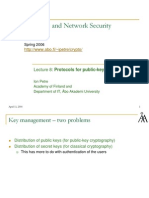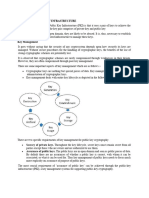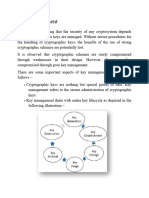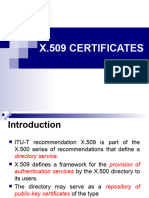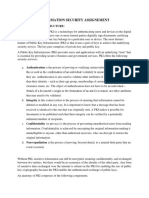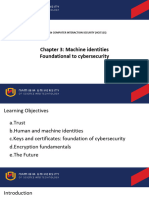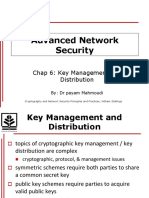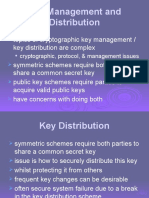0% found this document useful (0 votes)
33 views21 pagesLecture-15-Key Distribution
This document provides an overview of public-key cryptography and key management. It discusses several methods for distributing public keys, including public announcement, publicly available directories, and public-key authorities. It then focuses on public-key certificates, which bind a user's identity to their public key through a digital signature from a trusted certificate authority. The document explains how certificate validation and cross-certification between authorities allows verification of a user's identity and public key. It also covers certificate revocation lists for invalidating compromised keys before expiration.
Uploaded by
open up eyesCopyright
© © All Rights Reserved
We take content rights seriously. If you suspect this is your content, claim it here.
Available Formats
Download as PDF, TXT or read online on Scribd
0% found this document useful (0 votes)
33 views21 pagesLecture-15-Key Distribution
This document provides an overview of public-key cryptography and key management. It discusses several methods for distributing public keys, including public announcement, publicly available directories, and public-key authorities. It then focuses on public-key certificates, which bind a user's identity to their public key through a digital signature from a trusted certificate authority. The document explains how certificate validation and cross-certification between authorities allows verification of a user's identity and public key. It also covers certificate revocation lists for invalidating compromised keys before expiration.
Uploaded by
open up eyesCopyright
© © All Rights Reserved
We take content rights seriously. If you suspect this is your content, claim it here.
Available Formats
Download as PDF, TXT or read online on Scribd
/ 21









